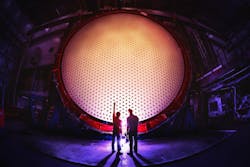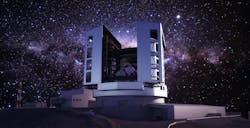The Weizmann Institute of Science has joined the the international consortium of distinguished universities and research institutions building the Giant Magellan Telescope (GMT). The partnership will provide additional world-leading scientific expertise and resources in astrophysics. The GMT is the largest and most powerful Gregorian optical-infrared telescope ever engineered.
The GMT’s completion has quickly become a top priority for the global scientific community.
“The Giant Magellan Telescope is an international endeavor consisting of thirteen universities and research institutions across five countries. Welcoming new international partners into our consortium to build the telescope is particularly important because science is global,” Walter Massey, board chair of the GMTO Corporation and former director of the National Science Foundation tells IndustryWeek. “The many questions that astronomy and the Giant Magellan Telescope seeks to answer impacts all of humanity and speaks to the core of our existence. This knowledge belongs to the world and not just one country or institution. The telescope’s immense scale and revolutionary technologies also require global expertise and resources to accomplish, without them the project would not exist.”
The Weizmann Institute of Science is a distinguished multidisciplinary research institution from Israel. Their Nella and Leon Benoziyo Center for Astrophysics promotes research in nearly all aspects of astronomy, expanding the GMT’s research capabilities by capitalizing on Weizmann Institute’s expertise and outstanding team of astrophysicists. Before officially joining the GMTO Corporation, faculty at the institute were partners in developing one of first instruments for the telescope, a spectrograph that is designed to study Earth-like planets around solar-type stars.
Now, the consortium will continue to benefit from world renowned Israeli innovation. Based on the institute’s leadership in astrophysics, particle physics, and space mission design, the Weizmann Institute of Science, through its flagship initiative, aims to provide new levels of insight into the central questions of fundamental physics, while contributing to wide-ranging practical applications.
Construction of the next-generation telescope is well underway on Las Campanas Peak at the southern edge of Chile’s Atacama Desert, one of the best locations on Earth to explore the universe. It will use seven of the world’s largest mirrors and the most advanced adaptive optics technology to see billions of lightyears into the universe with ten times the resolution of the famed Hubble Space Telescope. This extraordinary image clarity will enable scientists around the world to obtain new clues to fundamental nature and evolution of the universe — including the search of life on distant exoplanets.
The Weizmann Institute of Science joins the Arizona State University, Astronomy Australia Ltd., Australian National University, Carnegie Institution for Science, Fundação de Amparo à Pesquisa do Estado de São Paulo – FAPESP, Harvard University, Korea Astronomy and Space Science Institute, Smithsonian Institution, Texas A&M University, University of Arizona, University of Chicago and the University of Texas at Austin as partners.






